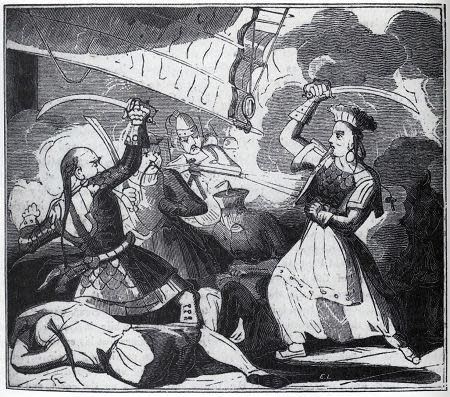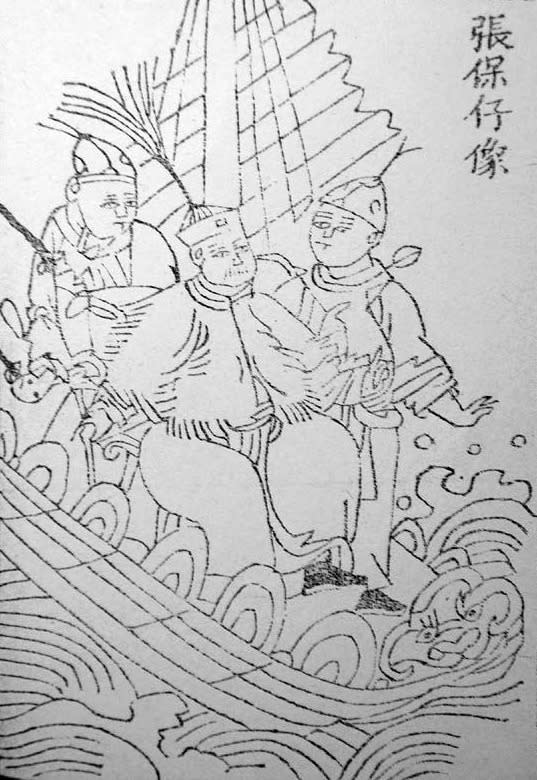4 of Asia’s most notorious pirates

Apart from tumultuous seas and the possibility of giant sea creatures lurking beneath the waves, there is another frightening phenomenon that haunts the wide open seas: pirates. Yes, a pirate’s life never ends, and pirates are still a significant presence on the high seas. The recently released Operation Mekong follows the narrative of a real-life massacre that occurred in 2011, where 13 sailors were killed by gunfire aboard two Chinese commercial vessels travelling across the Mekong River. However they didn’t just face pirates, but something much more dangerous (no spoilers from us here!): piracy as an organised crime network.
Piracy is hard to crack down upon and a critical problem most particularly in Southeast Asia. TIME reported that 41 per cent of all pirate attacks between 1995 and 2013 occurred within Southeast Asia. In 2013, there were a total of 125 pirate attacks (actual and attempted) in the waters of the Singapore Straits alone. Pirates in Southeast Asia work stealthily, boarding ships and stealing cargo or spare parts which are then sold to pre-arranged buyers on the black market.
Pirates have been around for a long time - Asian history and folklore is rife with tales of pirates, scheming groups of bandits who prey on innocent sea folk. Here are some of the most prominent and terrifying pirates in Asian history.
Tuanku Abbas

Photo: Getty Images
Tuanku Abbas was one of Southeast Asia’s most active pirates in the 1840s, but little is known about his life, the extent of his attacks and the strength of his crew. What we do know, however, is that he was born with royal blood, the very brother of an Indonesian rajah. But it seems like royal living just wasn’t enough for Tuanku Abbas, because he soon turned to a life of crime on the high seas. Abbas gained notoriety for sponsoring and heading pirate raids in the South China Sea. His most famous raid was that of an Indian ship, the Fattal Khair, which Abbas captured and ransacked. The crew managed to escape and reported the incident to the British authorities, who swiftly delivered justice by burning Abbas’ entire village down.
Ching Shih

Photo: Wikipedia
This particular pirate was the biggest and baddest of them all, and embodied the very definition of a femme fatale. The beautiful Ching Shih, otherwise known as Cheng I Sao or Madame Ching, terrorised the South China Sea in the early 19th century. She started her life as a lowly prostitute, but her marriage to Cheng I was what turned her life around. Cheng I was a successful pirate and leader of the ‘Red Flag Fleet’. Ching Shih fully participated in his life of crime, and their fleet grew exponentially over the years. After her husband died in Vietnam in 1807, then 32-year-old Ching Shih swiftly gained control of all her husband’s pirate fleets. At the height of her power, Ching Shih commanded more than 1,500 ships and 80,000 sailors - more than any pirate captain in the history of the world. With her massive naval army, Ching Shih plundered her way through the South China Sea, robbing entire towns. Fun fact: Ching Shih was also portrayed in Pirates of the Caribbean: At World’s End as the Chinese pirate lord, Mistress Ching.
Cheung Po Tsai

Photo: Wikipedia
Cheung Po Tsai, a Hong Kong pirate, is often portrayed as a Robin Hood of sorts in modern movies and television shows. Cheung, the son of a fisherman, was captured by a pirate and wife when he was 15 years old. They adopted Cheung and taught him their ways, and he rose to become one of the most notorious pirates in Chinese history. The adoptive pirate couple were none other than Cheng I and Ching Shih themselves. After taking over the family business, Cheung carved a name for himself by marauding the Guangdong coastline, using his army of over 20,000 men and several hundred ships. During his seafaring days, Cheung amassed great treasures, which he kept hidden in several caves across the South China Sea. One such cave (in his namesake) was on Hong Kong’s Cheung Chau Island. It has long been cleared of any treasure, but stands today as a testament to the notorious pirate that once besieged the South China Sea.
The Bugis Tribe

Photo: Getty Images
Ever wondered how the name ‘Boogeyman’ came about? For Western folk today, the Boogeyman is a nightmarish fiend, but the name purportedly originates from the Bugis Tribe of South Sulawesi, Indonesia. The Bugis tribespeople were infamous pirates who during colonial times often pillaged the English and Dutch trading ships from the British East India Company. The Bugis were expert seafarers, travelling as far as Australia and New Guinea just to trade. Some even work as mercenaries, at one point serving the Dutch and other European armies in their colonial pursuits. The expression “the Boogeyman is coming to get you” is believed to have arisen from the deeply rooted fear that European mariners from centuries past had for the “bugi men”. Even today, the Bugis people are still associated with piracy attacks, on land and sea, in and around Indonesia.


